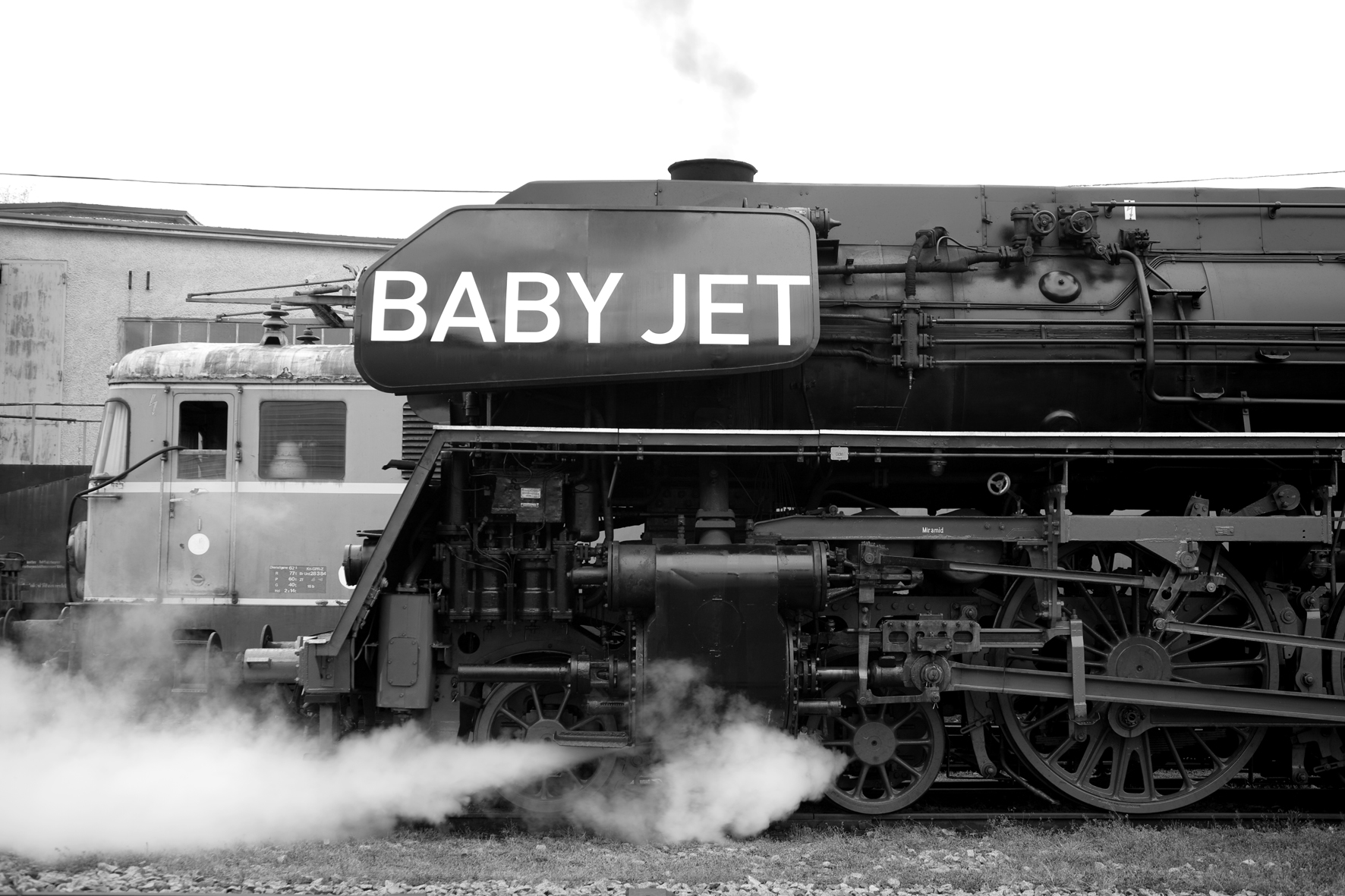supersonic maglev vacuum tube
miniaturised and individualised
Klangwolke Linz 2010
Saturday, September 4, 2010, 07:45 pm
Danube park Linz
admission free
For Klangwolke Linz 2010 the artists network Lawine Torrèn has developed an incredible concept for the future of the railway: BABY JET, a supersonic magnet train in a vacuum tunnel, a pioneering project for Europe – straight from Linz.
Klangwolke 2010 is a railway project for the future. On september 4, 2010 at dusk Lawine Torrèn converted the Danube Park into computing space. To the soundtrack by Peter Valentin a real-time thriller came up right in front of the audience. With a supersonic event experiment three physicists of our project team presented the train of the future: BABY JET.
BABY JET is not a piece of art. it's the product of an industrial project run by lawine torrèn, which has been created during several months in association with partners like ÖBB (austrian federal railways), Siemens, the Ars Electronica Futurelab and the Linz Center of Mechatronics. From analyzing of the realizability to rapid prototyping: this trailblazing project developed rapidly.
BABY JET - Klangwolke Linz 2010 was created on behalf of Brucknerhaus
in cooperation with ORF Landesstudio Oberösterreich (upper austrian tv broadcasting service).
Baby Jet Song
Song: Peter Valentin © Stefan Aglassinger
Performance Short
© Stefan Aglassinger, Musik Peter Valentin
Long before Hyperloop
Feasibility study in preparation of industrial research
Application at the Austrian research promotion agency (FFG)
BABY JET aims at being a maglev train, which operates between cities in vacuum tubes, with minimum diameter and the smallest possible units, travelling at supersonic speed. The system – operated without a driver and at individualised travel time – could allow for replacement of fossil air traffic.
This study aims at: clarification, representation and communication of technical feasibility, a hypothetically very low power consumption, unrivalled travel times with high capacity of low land and resource consumption, comparably lower construction costs, zero emissions as well as business and economic benefits.
Zoe Knights (Eve) © Magdalena Lepka
No friction – no air resistance – hardly uses energy
Fossil fuels are dangerously low. Air traffic between European cities, as we know it, has an expiration date. As an alternative, high-speed trains have already reached their limit due to air resistance. The combination of a frictionless and wear-free, magnetic propulsion (track) with the wind resistance of a vacuum tube going to zero has the potential to be a very elegant and different option, without upper limit. However, until now, systems have been thought of as being very expensive and, therefore, not socially acceptable. Reducing the costs would mean reducing them exponentially. Radically decreasing the cross section is precisely what the project BABY JET intends.
BABY JET combines the proven propulsion system of the longstator linear motor in the guideway of a partially vacuumed tunnel, with the aim of reaching supersonic speed. The obvious problems of the costs for tunnel construction as well as the technical solution for vacuumising could be minimised by reducing the vehicle and tunnel cross section to a minimum, which itself exponentially reduces the mass moved in construction and operation. The small size of the system is a decisive advantage.
In brief: NO FRICTION – NO AIR RESISTANCE – HARDLY USES ENERGY – OVER 1,000 KM/H AND NO UPPER LIMIT – HUGE CAPACITY IN THE SMALLEST TUBE
Stefan Kreiss, Christian Strasser © Wolfgang Kirchner
BABY JET will attempt to clarify the following questions:
➔ Is the miniaturisation of a "Transrapid"-like system possible and what hurdles would need to be overcome regarding route and propulsion?
➔ How can this system be best installed and operated in a tube of less than 1.6 metres in diameter?
➔ How feasible is maintaining the partial vacuum technically?
➔ How are the vehicle and the nacelle constructed and what do they look like?
Electric lokomotive 1010 and steam engine 01 in Ampflwang © Magdalena Lepka
➔ What are the technical challenges posed by high speed as well as the individualisation of vehicle frequency?
➔ What opportunities and risks do the tunnel and tube involve in terms of track alignment?
➔ What is the energy balance of a propulsion system that could feed back a large portion of its input (acceleration and lifting energy)?
➔ Can the vacuum be considered as potential energy storage?
➔ Which test track would be the best option?
➔ What is the traffic and business analysis?
➔ Which economic benefits does the system have?
Alice, Bob and Eve at the Tabakfabrik Linz © Magdalena Lepka
Alice at LCM testing an electromagnetic bearing © Magdalena Lepka
➔ Which would be the first route segment to be connected?
➔ What legal framework should be put in?
➔ Which social hurdles, in terms of acceptance, would need to be overcome and how could this communication be successfully achieved?
Alice und Bob im Kohlerevier Ampflwang © Magdalena Lepka
The approach is highly interdisciplinary. A purely technical method would fall short when it comes to a completely new type of locomotion that does not match established social conditions. The idea is really old; the novelty aspect of the project BABY JET lies in the reduction, which exponentially lowers costs, resources and construction time. However, this could also be counterintuitive to the subconscious belief in progress that the enlargement of units creates safety and cost efficiency.
As a result, we try to explore the feasibility of a first route within a planning interval of 15 years.
LCM © Magdalena Lepka
Project partner
TU Wien, Institut für Konstruktionswissenschaft und technische Logistik
Der Forschungsbereich Konstruktionslehre und Fördertechnik beschäftigt sich mit den Grundlagen der maschinenbaulichen Konstruktion und mit der Transport-, Lager- und Materialflusstechnik.
Prof. Georg Kartnig
Paris Lodron Universität Salzburg, Öffentliches Recht
Fachbereichsteil Verfassungs- und Verwaltungsrecht
deckt in der Forschung das gesamte Spektrum des öffentlichen Rechts einschließlich seiner Bezüge zum Europarecht ab.
Prof. Reinhard Klaushofer
Researching companies
LCM – Linz Center of Mechatronics.
pfeiffer vacuum
ALPINE – one of Europe´s leading construction companies 2011
Lead: Lawine Torrèn
FFG - Grant - Feasibility study in preparation of industrial research - IV2Splus Tender ways2go – 2.3.2 Means of traffic in the future
Duration: July 2012 bis May 2013
Result: disclaimed
Promotion Trailer
© Stefan Aglassinger, Musik Peter Valentin, Animation Studioastic





















































